#herculaneum
Text

Lararium in the House of the Skeleton, Herculaneum, Italy.
Photography © Luis Adrián Rojas Yáñez
2K notes
·
View notes
Text

Fresco from Herculaneum.
276 notes
·
View notes
Text
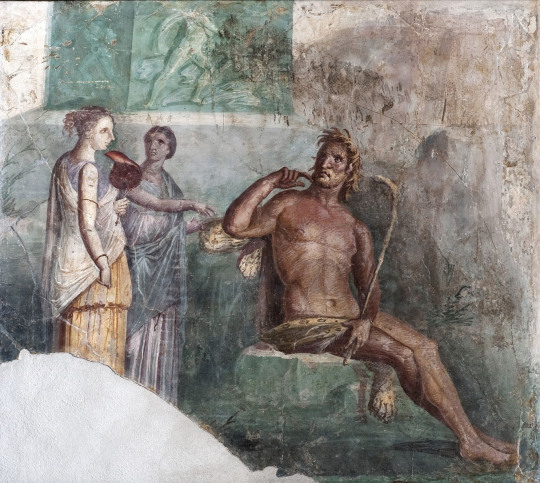
~ Polyphemus and Galatea: Fresco of the Fourth style from Pompeii or Herculaneum.
Date: A.D. 45-79
Provinience: Naples, National Archaeological Museum, Hall LXIX (Napoli, Museo archeologico nazionale, Sala LXIX); Pompeii, Archaeological Park, Herculaneum, Archaeological Park.
#ancient#ancient art#history#museum#archeology#ancient history#archaeology#Polyphemus and Galatea#Polyphemus#Galatea#fresco#pompeii#Herculaneum#a.d. 45#a.d. 79
551 notes
·
View notes
Text



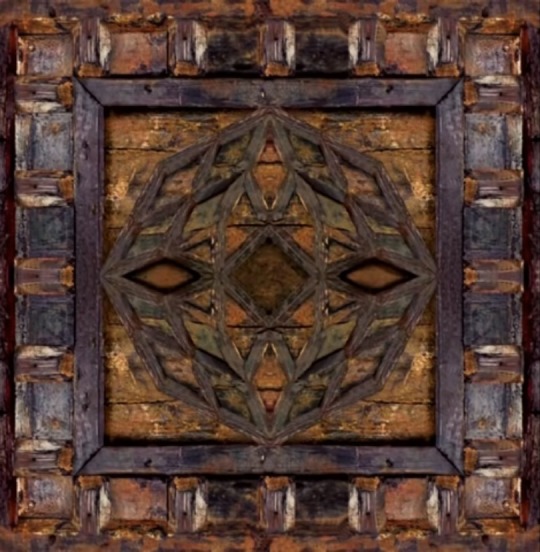

Wooden ceiling panels from Herculaneum with restored colour.
The painted surfaces were preserved enough when these panels were discovered that they were able to identify the colours using scientific analysis.
Stills from this documentary.
433 notes
·
View notes
Text

This carbonized cradle is the only example of its kind from Roman antiquity that has come down to us. It was preserved by the eruption of Mt Vesuvius and it was discovered in Herculaneum with a tiny infant skeleton still inside.
#:(#herculaneum#cradle#ancient world#ancient rome#roman empire#ancient culture#ancient history#mt vesuvius
237 notes
·
View notes
Text


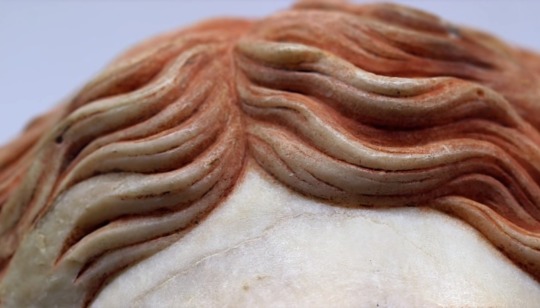
Coloured ancient statue from Herculaneum.
Stills from this documentary, Life and Death in Herculaneum (on YouTube).
592 notes
·
View notes
Text
HERCULANEUM-A beautifully decorated wall mosaic framed with seashells of Neptune and Amphitrite from a triclinium.
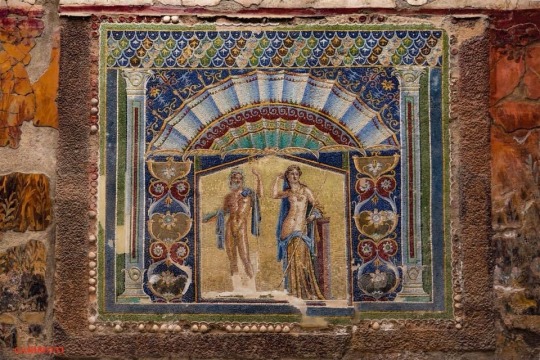
137 notes
·
View notes
Text

Bronze portrait bust found in the Villa of the Papyri at Herculaneum. The subject has been variously identified as Priapus, Dionysus/Bacchus, Plato, and Poseidon. Artist unknown; Roman copy after a Hellenistic original of ca. 100 BCE. Now in the National Archaeological Museum, Naples. Photo credit: Allan Gluck/Wikimedia Commons.
#classics#tagamemnon#Ancient Rome#Roman Empire#Herculaneum#art#art history#ancient art#Roman art#Ancient Roman art#Roman Imperial art#Greek art#Ancient Greek art#Hellenistic art#sculpture#portrait sculpture#portrait bust#metalwork#bronze#bronzework#MAN Naples#NAM Naples
657 notes
·
View notes
Text

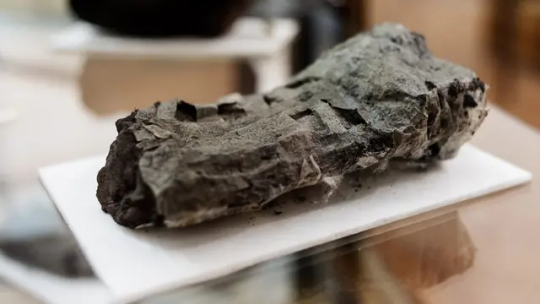
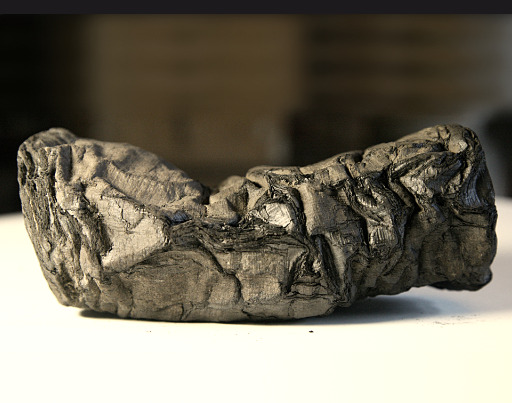
Three Students Just Deciphered the First Passages of a 2,000-Year-Old Scroll Burned in Vesuvius’ Eruption
A Roman scroll, partially preserved when it was buried in the eruption of Mount Vesuvius in A.D. 79, has been virtually unwrapped and decoded using artificial intelligence.
The feat was achieved by three contestants in the Vesuvius Challenge, a competition launched in March 2023 in which people around the world raced to read the ancient Herculaneum papyri.
Papyrologists working with the Vesuvius Challenge believe the scroll contains “never-before-seen text from antiquity,” and the text in question is a piece of Epicurean philosophy on the subject of pleasure. The winning submission shows ancient Greek letters on a large patch of scroll, and the author seems to be discussing the question: are things that are scarce more pleasurable as a result?
The author, whose identity is unconfirmed, doesn’t think so: “As too in the case of food, we do not right away believe things that are scarce to be absolutely more pleasant than those which are abundant,” one passage from the scroll reads.
The three members of the winning team had previously individually made significant contributions to the competition. Luke Farritor, a computer science student at University of Nebraska-Lincoln, and Youssef Nader, a machine learning Ph.D. student at Freie University in Berlin, had been two of the first contestants to detect a smaller number of letters, winning $40,000 and $10,000 respectively. Julian Schilliger, a robotics student at ETH Zürich, developed a tool that began to automatically segment the scrolls. They will share the $700,000 grand prize.
Nat Friedman, a tech investor and executive, and one of the challenge’s organizers, recently printed out the winning submission. “All this has been in this dreamlike digital world in my imagination before," Friedman says. "Seeing it on paper, rolling it up, it just made it so tangible.”
There’s a lot more to discover. The scroll partially decoded by the winning submission was one of 800 discovered in a southern Italian villa that was first uncovered in 1750. The combined efforts of the competitors and organizers so far have resulted in around 5% of one scroll being read.


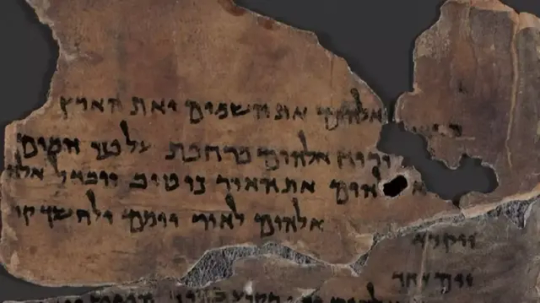

The final scramble to read the scrolls
Since the Vesuvius Challenge launched nearly a year ago, participants had both cooperated and competed, sharing their latest techniques with each other and posting pictures of their progress. But as the race for the grand prize intensified, the Discord, a social media platform where the participants shared information, went dark, says Friedman.
Of the eighteen submissions for the grand prize, most of them were received on the last day of the contest, Dec. 31, and three were sent in the final ten minutes, according to Friedman. Friedman recalls he was at home with his family around Christmas, decorating for the holiday while compulsively refreshing his phone, when the winning submission came in. “I ran into my little office at home and popped it open,” he says. “I was like, ‘Wow, this is really magnificent.’”
In accordance with the criteria set in March 2023, the winning submission contains four passages of 140 characters each, with at least 85% of the characters in each of those passages recoverable by professional papyrologists. It also contains a further 11 columns of text.
It isn’t known who authored the ancient scroll, but experts have developed theories. “Is the author Epicurus' follower, the philosopher and poet Philodemus, the teacher of Vergil? It seems very likely,” writes Richard Janko, professor of classical studies at the University of Michigan. “Is he writing about the effect of music on the hearer, and comparing it to other pleasures like those of food and drink? Quite probably.” Robert Fowler, a professor of Greek at the University of Bristol, also believes the author to be Philodemus. “Like other Epicureans, he valued pleasure above all - but pleasure rightly understood, not mere indulgence,” Fowler writes of the philosopher.
In the final section of the scroll, the author appears to criticize his intellectual adversaries, who “have nothing to say about pleasure, either in general or in particular, when it is a question of definition.”
“I can't help but read it as a 2000 year old blog post, arguing with another poster,” says Friedman. “It's ancient Substack, and people are beefing with each other, and I think that's just amazing.”
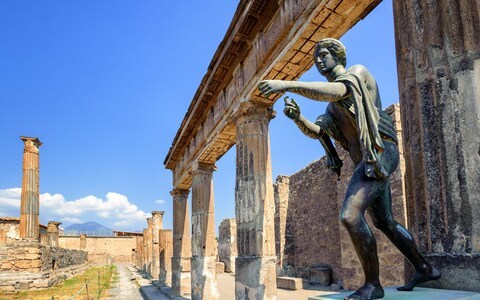
What comes next
The Vesuvius Challenge has issued a new grand prize for 2024 that will allow the AI-enhanced decoding to move at a faster pace.
The competitors largely have been developing algorithms for automatic letter detection—using AI to see traces of ink on segments of virtually unrolled scrolls. Aside from letter detection, the other main challenge associated with reading the scrolls is segmentation—separating the layers and virtually unrolling the scrolls. So far, this process has been highly manual; the Vesuvius Challenge employed three full-time segmenters. In order to ensure that they’d have segmented enough of the scroll for someone to win the grand prize, Friedman bought the team new monitors and computers to boost their productivity. The challenge for 2024 is to automate the segmentation process.
Friedman admits that he has had other tempting offers of new quests to pursue. Over the last year, he says his inbox has been filled with Robinson Crusoe-esque proposals, from people alerting him to lost shipwrecks and ancient cities, undecoded languages, and strange glyphs on the sides of mountains.
But he can’t walk away. He wants to help read all of the 800 scrolls already discovered in the villa. And some archeologists believe there is a main library containing tens of thousands of scrolls, still waiting to be excavated.
To expedite the excavation, Friedman has obtained the mobile number of the Italian civil servant responsible for the villa, whom he has texted, twice. “My hope is that I won't have to go and dig it out myself,” says Friedman. “But if that's what it comes to, I will.”
By WILL HENSHALL.
#AI reads ancient scroll buried by Vesuvius eruption#Three Students Just Deciphered the First Passages of a 2000-Year-Old Scroll Burned in Vesuvius’ Eruption#Herculaneum#Herculaneum papyri#Villa of the Papyri#Mount Vesuvius#ancient artifacts#archeology#archeolgst#history#history news#ancient history#ancient culture#ancient civilizations#roman history#roman empire#long post#long reads
75 notes
·
View notes
Text

Giocatrici di astragali
The Astragali Players
This piece from Herculaneum (1st century AD) depicts Phoebe trying to pacify Latona and Niobe while two Niobids - Hilearia and Agle - play knucklebones, oblivious to their imminent doom.
The information is derived from inscriptions made by the painter, Alexander of Athens.
Currently at the National Archaeological Museum, Naples.
Source: 🏺
#UPD: pinakes not frescoes* I was sleep deprived#greek mythology#ancient art#art#herculaneum#alexander of athens#phoebe#niobe#latona#LATONA 🌻#ANTIGÜEDADES 💎
96 notes
·
View notes
Text
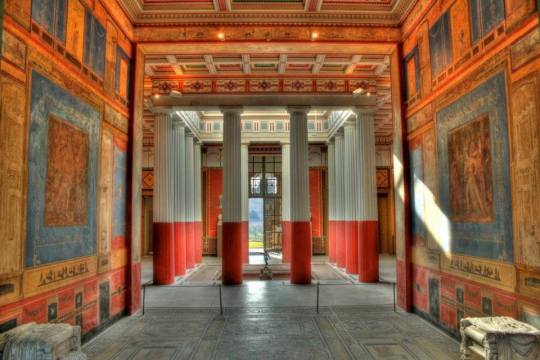
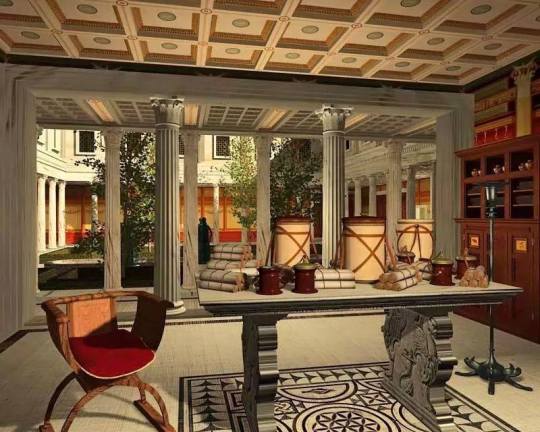

Virtual reconstruction made by Virtual Archaeological Museum, and Comitato Cininnato Pompei.
Atrium. House of the Faun, Pompeii .
Library and peristyle of Villa of the Papyri, Herculaneum.
House of the Labyrinth, Pompeii.
Beautiful
2K notes
·
View notes
Text

Mosaic decoration depicting the sea god Neptune with his wife Amphitrite. Summer triclinium of the House of Neptune and Amphitrite, Herculaneum.
364 notes
·
View notes
Text


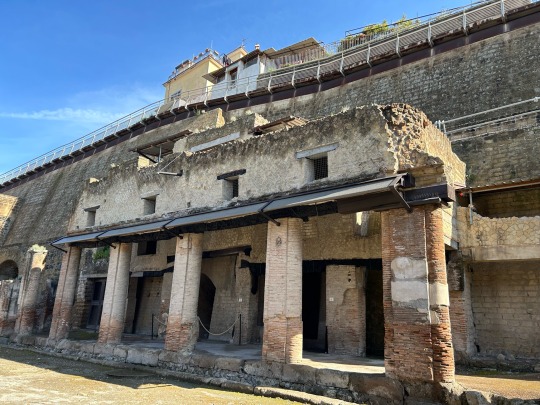
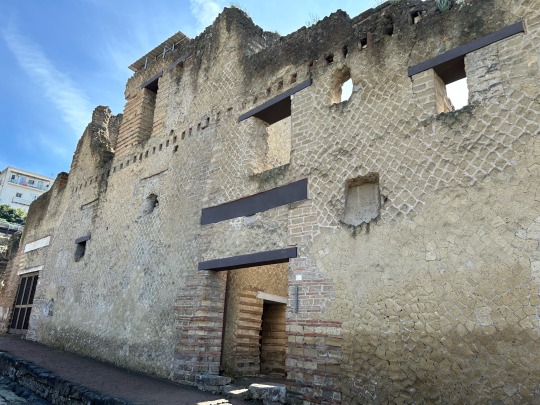

Streets of Herculaneum.
March 13, 2024
#herculaneum#ercolano#italy#italia#Naples#Napoli#travel#architecture#ancient architecture#archaeology#historical architecture#original photography#streetscape#street photography#iphonography#photographers on tumblr#wandering#photography#urbanexploration#wanderingjana
55 notes
·
View notes
Text

Tunneling into the Villa of the Papyri, Herculaneum, location of the only library from the ancient world whose collection has survived into the present day.
409 notes
·
View notes
Text

Carbonized money purse found in Herculaneum.
Because wood is perishable, items like this were not preserved in the archeological record and it is only through excavations in Pompeii and Herculaneum that we know these existed at all.
#ancient rome#roman empire#ancient culture#ancient civilisations#daily life in history#herculaneum#mt vesuvius
342 notes
·
View notes
Text
800 new deciphered classical texts about to drop, thanks to volcano

So when Vesuvius erupted and buried Pompeii, it also buried the nearby town of Herculaneum, which contained a library of papyrus scrolls, about 800 of which were recovered. Being carbonised preserved them from the fragility papyrus normally exhibits anywhere wetter than Egypt, but also presented a new problem: You can't unroll them without disintegrating them, so how do you read them?
Well, these days we have Technology that emits Particles, and someone just won a prize for figuring out how to read the scrolls with CT scanning:
Youssef Nader, Luke Farritor, and Julian Schilliger demonstrated their technique by translating the end of one of the scrolls, which turned out to be an Epicurean discourse on material pleasures, words not read for almost 2,000 years:
...as too in the case of food, we do not right away believe things that are scarce to be absolutely more pleasant than those which are abundant[...]Such questions will be considered frequently.
In the closing section of the text our author takes a parting shot at his adversaries, who “have nothing to say about pleasure, either in general or in particular, when it is a question of definition.” Finally the scroll concludes: “… for we do [not] refrain from questioning some things, but understanding/remembering others. And may it be evident to us to say true things, as they might have often appeared evident!”
The process is currently time-consuming, hence the small amount of text translated now, but the organisers hope to improve its efficiency now they have a workable method, and aim to have mostly-complete translations of a handful of scrolls within the next year.
Safe to say everyone who works in a field with a holy-grail lost classical text they'd resigned themselves to never being able to read is crossing their fingers right now!
75 notes
·
View notes